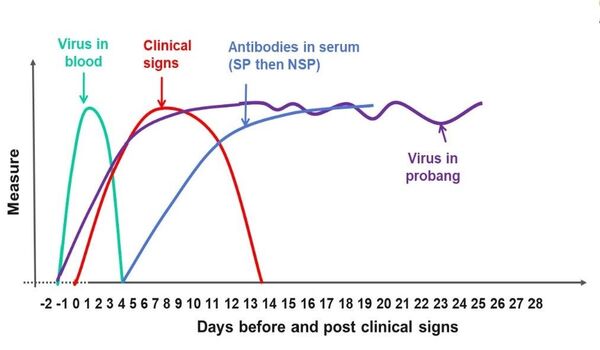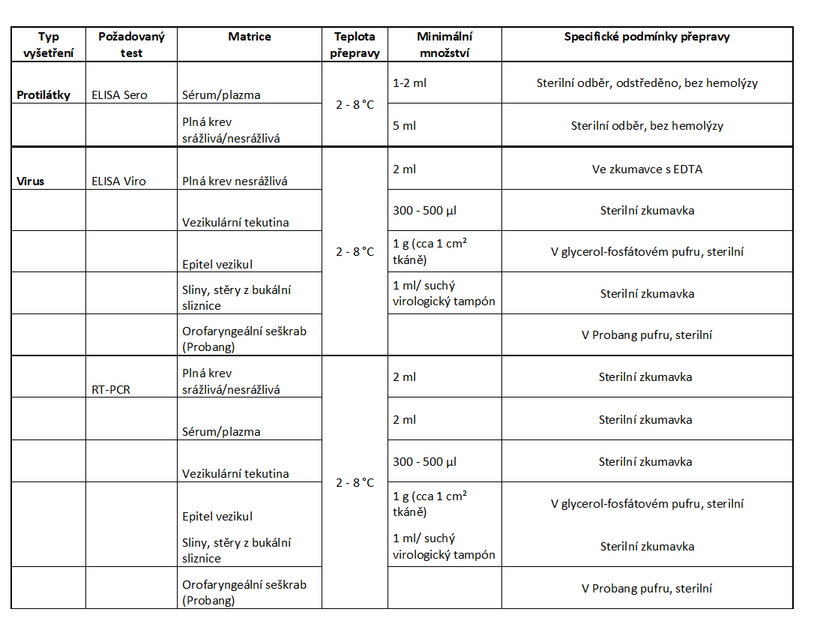Foot-and-mouth disease is a highly contagious viral disease affecting solipeds. It is caused by a small RNA virus from the family Picornaviridae, which is extremely contagious. It is one of the most contagious animal viruses. The National Reference laboratory for Foot-and-Mouth disease and Vesicular diseases carries out comprehensive SLAK diagnosis, including differential diagnosis.
Description
The virus affects all ruminants and pigs. The morbidity rate is up to 100%, while the mortality rate is low at 5%. However, during the course of the disease, infected individuals shed the virus into the external environment. Foot-and-mouth disease spreads between animals through inhalation or contact. The virus is present in high concentrations in vesicular fluid and saliva, and is also excreted in urine, faeces, and milk. Indirect transmission via contaminated footwear, clothing, transport vehicles, agricultural machinery and animal products is another major route of spread. In affected areas, depending on the infectious dose and the size of the susceptible population, the virus can spread very rapidly.
Laboratory diagnostics
1. Samples suitable for laboratory examination
Sample collection to test for the presence of virus in case of suspected SLAK:
- epithelium from fresh vesicles
- vesicular fluid
- oropharyngeal scrapings (Probang test)
- buccal mucosal swabs
- saliva
- blood
- serum
- milk
- semen
Sample collection for antibody testing:
- serum
- plasma
2. Laboratory diagnostics
2.1 Virus detection
The virus is detected from the sample by RT-PCR. If positive, the virus is typed by antigen ELISA. For virus isolation and subsequent amplification, it is important to preserve the live virus and therefore the sample is collected in glycerol-phosphate buffer.
In cattle, a persistently infected carrier may occur after recovery and 28 days, in which case a virus sample can only be obtained by oropharyngeal swabbing (Probang test). The oropharyngeal scraping sample (Probang test) is stored in Probang buffer.
The virus appears in oropharyngeal swabs up to 2 days before the onset of clinical signs.
SLAK virus appears in the blood 1-2 days before the onset of clinical signs and disappears 5 days after the onset of clinical signs.
2.2 Detection of antibodies
Antibodies to SLAK are produced in serum from day 2 after the onset of clinical signs. Antibodies are tested by NSP ELISA, which can detect post-infectious antibodies. If positive, the antibodies are typed by serotype ELISA.



Download
| Typ souboru | Název | Velikost | |
|---|---|---|---|
| General application form | 0,1 MB | Stáhnout | |
| General application form | 0,4 MB | Stáhnout |




